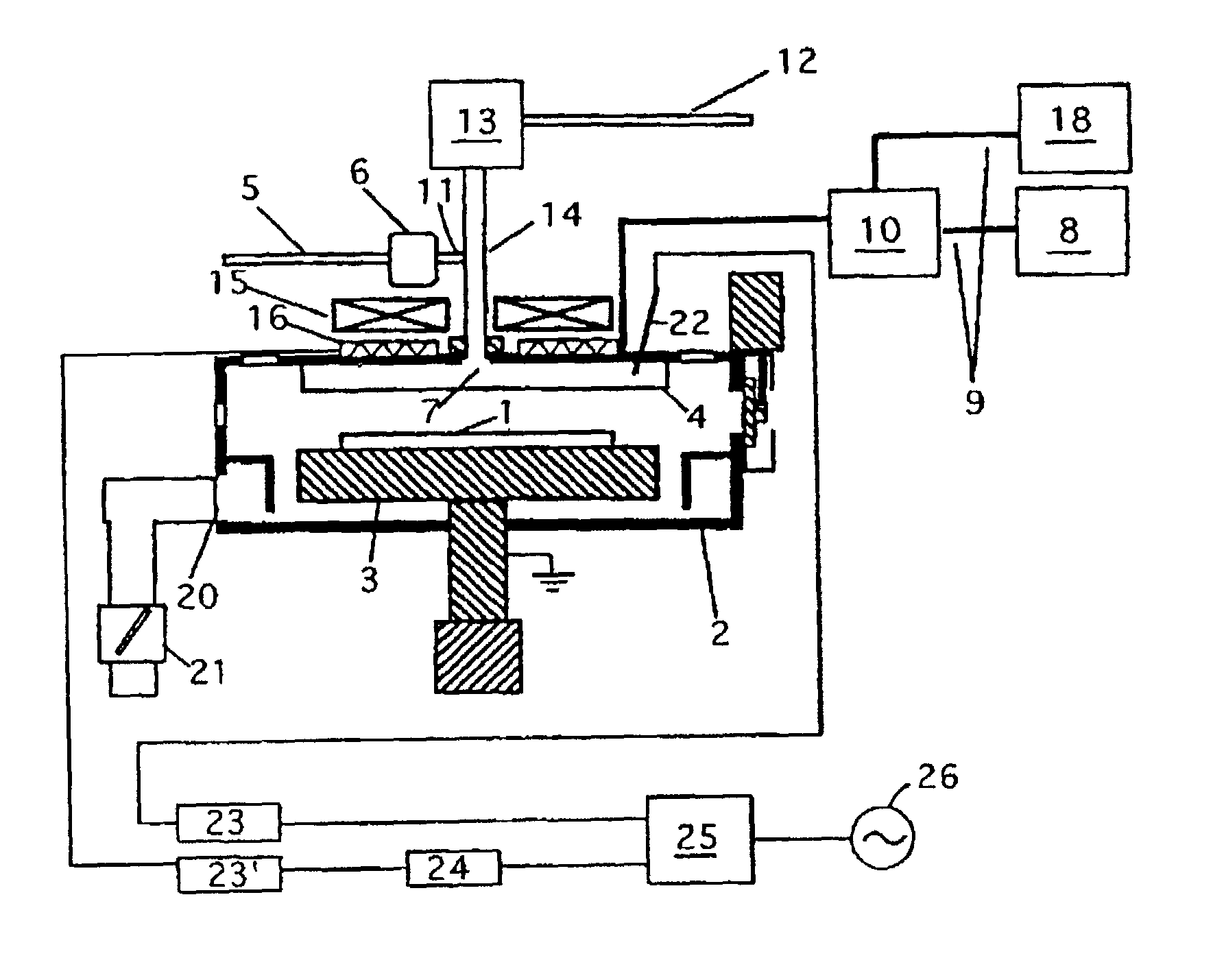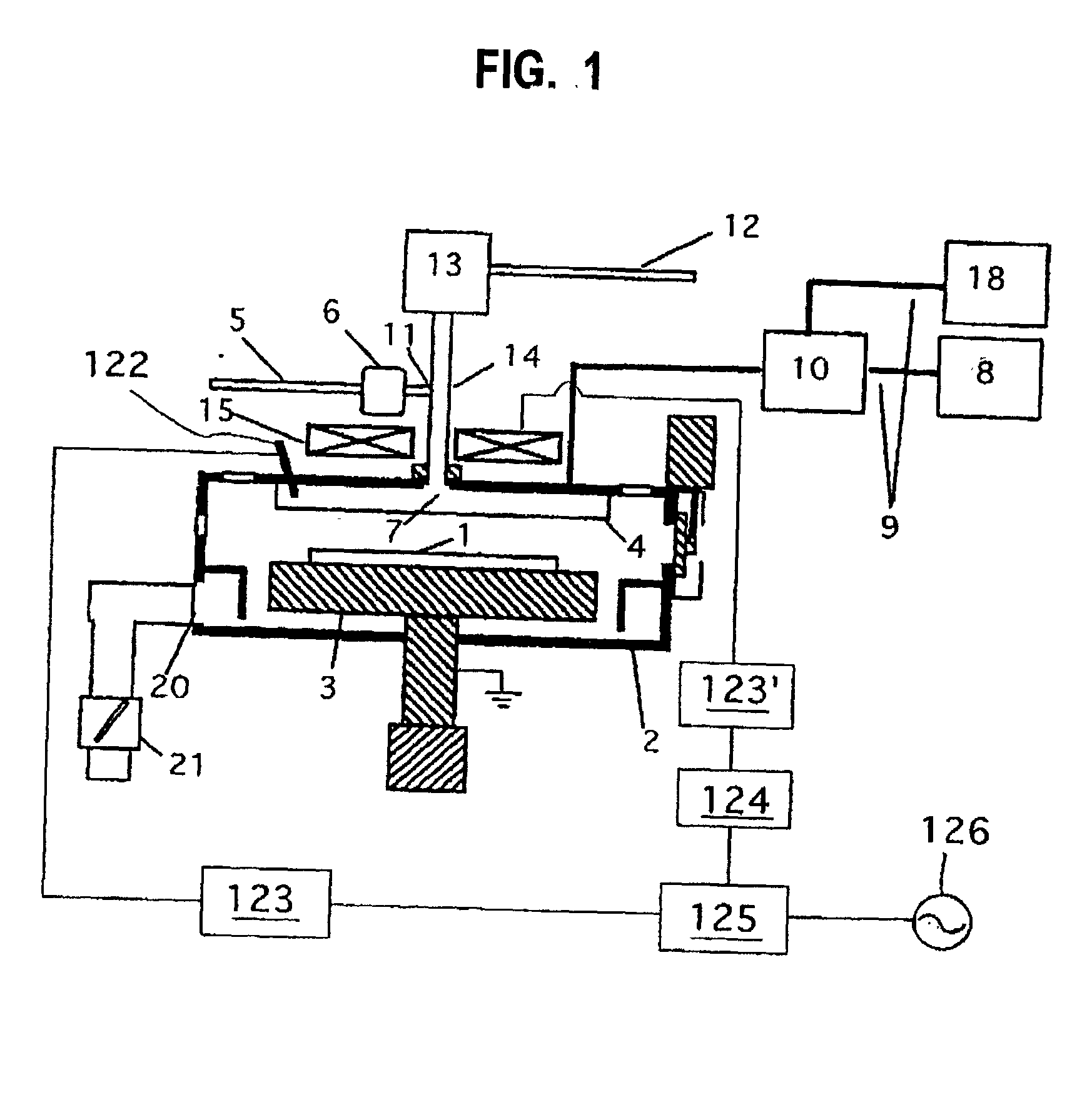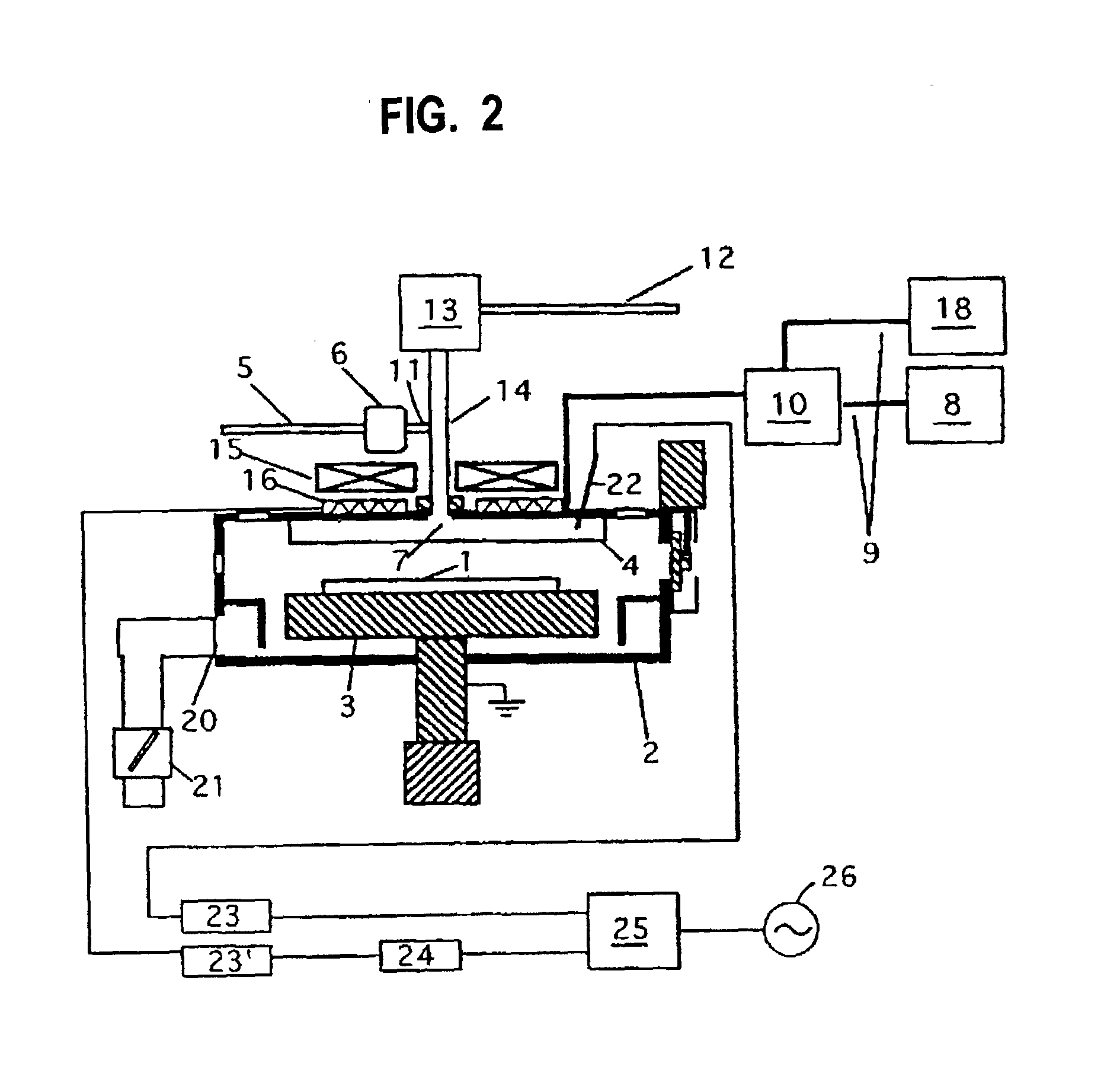Plasma CVD apparatus conducting self-cleaning and method of self-cleaning
a self-cleaning and plasma technology, applied in chemical vapor deposition coatings, chemical apparatus and processes, coatings, etc., can solve problems such as the formation of unwanted by-products (aluminum fluoride,
- Summary
- Abstract
- Description
- Claims
- Application Information
AI Technical Summary
Problems solved by technology
Method used
Image
Examples
embodiment 2
[0092] FIG. 6 shows Embodiment 2 of the capacitive coupled plasma CVD apparatus for conducting self cleaning according to the present invention. This apparatus is a capacitive coupled plasma CVD apparatus for conducting remote plasma cleaning to process 300 mm substrates.
[0093] Inside a reactor, a susceptor 603 for placing an object-to-be-processed 601 such as glass or silicon substrates on it is set up. The susceptor 603 comprises preferably ceramic or aluminum alloy, inside which a resistance-heating heater is embedded. The susceptor 603 is also used as a lower electrode for generating a plasma. In this embodiment, the susceptor 603 has a diameter of 325 mm and an area 1.17 times larger than that of an object-to-be-processed 601 with a diameter of .O slashed.300 mm. Within the range of 1.08 to 1.38 times, a susceptor of a different diameter can be used. A showerhead 604 for emitting reaction gases equally to the object-to-be-processed 601 is set up on the ceiling of the reactor an...
embodiment
[0104] Embodiment
[0105] Using a conventional capacitive coupled plasma CVD apparatus shown in FIG. 1 and the capacitive coupled plasma CVD apparatus in Embodiment 2 according to the present invention shown in FIG. 6, comparative experiments of deposition rates, film thickness non-uniformity, cleaning rates, and cleaning cycle under conditions described below were conducted.
[0106] (1) Deposition Conditions:
[0107] Deposition conditions for the conventional capacitive coupled plasma CVD apparatus shown in FIG. 1 were: a TEOS flow of 250 sccm, an O.sub.2 flow of 2.3 slm, a distance between upper and lower electrodes of 10 mm, a showerhead diameter of .O slashed.350 mm, a lower electrode diameter of .O slashed.350 mm, a chamber pressure of 400Pa, a showerhead temperature of 150.degree. C., a susceptor temperature of 400.degree. C., a reaction chamber inner wall temperature of 140.degree. C., a radio-frequency power (13.56 MHz) at 600W and radio-frequency power (430 kHz) at 400W. Under th...
PUM
| Property | Measurement | Unit |
|---|---|---|
| temperature | aaaaa | aaaaa |
| temperature | aaaaa | aaaaa |
| thickness | aaaaa | aaaaa |
Abstract
Description
Claims
Application Information
 Login to View More
Login to View More - R&D
- Intellectual Property
- Life Sciences
- Materials
- Tech Scout
- Unparalleled Data Quality
- Higher Quality Content
- 60% Fewer Hallucinations
Browse by: Latest US Patents, China's latest patents, Technical Efficacy Thesaurus, Application Domain, Technology Topic, Popular Technical Reports.
© 2025 PatSnap. All rights reserved.Legal|Privacy policy|Modern Slavery Act Transparency Statement|Sitemap|About US| Contact US: help@patsnap.com



